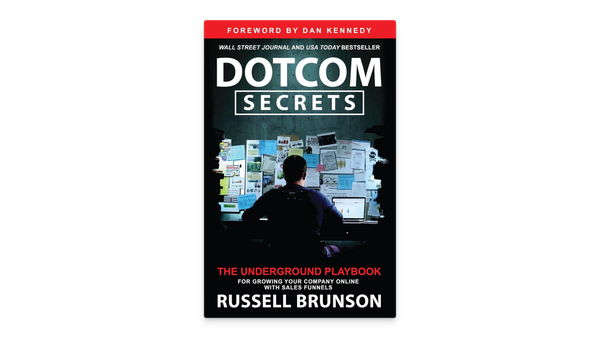Two Weeks Notice
What’s in it for me? Turn your business dreams into reality.
Here’s a sobering fact: we spent almost a third of our lives working. That can be tough to hear – especially if you’re currently working to achieve someone else’s goals.
Sure, the security of a 9-to-5 is comforting. But wouldn’t you rather enjoy the financial, creative, and lifestyle freedom of being your own boss? This is not a pipe dream. Starting your own business is more achievable than you might think.
The author made the leap when she was 31. She left her office job and started creating digital courses to help people with their online marketing. The result? She became an 8-figure entrepreneur.
In this summary, you’ll discover the tricks, tips, and tools needed to do the same. This step-by-step startup plan teaches you everything you need to know about building and growing your online business – so you can finally find the success you deserve.
Find your why, and make your exit.
Are you happy with your current work situation? If you’re reading this summary, the answer is probably no.
Don’t worry – that’s nothing to be ashamed of. In fact, recognizing your own frustration is the first step on your journey to freedom. There might even come a tipping point that pushes you into your new life. For the author, it came when her best friend called her out for working on her wedding day. She decided then that she didn’t want to hustle on someone else’s behalf anymore.
That was her reason for becoming her own boss. What’s yours?
Once you’ve found your “why,” it will be easy to decide you’re really going to do this. Now you just have to get started.
The best way to give yourself the push you need is to schedule an exit date for your current job. The author wrote hers on a sticky note and put it up on her bathroom mirror. When picking a date, ask yourself, Which day would the bravest version of myself choose?
This doesn’t mean leaving without a plan. Set your date so you have time to build a runway for your exit. Your runway will consist of three simple steps:
First, define your starter idea – what business do you want to start?
Second, create a financial plan. You don’t need to draw up a whole business plan – but you do need to know how much money to make to survive.
Third, create one piece of content to put online. You don’t need a website for this – just start with social media.
We’re going to dive into each of these steps in the next sections. And once you’ve completed them, it’s time to hand in your notice. Research the best way to quit your job – you want to stride into your new life as gracefully as possible.
As you do so, rest assured that it’s completely normal to have tons of questions. You don’t need to have all the answers from the get-go. Your “why” just needs to be a little stronger than your doubts.
And if you’re worried that you’re going to fail – well, that’s part of the learning process. The author’s first digital course launch was a massive flop. Now, her business makes eight figures a year.
So what are you waiting for? Find your why, plan your exit, and then get out of there! The world is ready for you.
Nail down your business idea.
If you want to run a business, you need a product to sell. This much is obvious. What you might not realize is that it’s perfectly OK to start without an exact product in mind.
That’s right – you don’t need a revolutionary new idea to start a business. You just need to find your 10-percent edge. What does that mean?
The author was working as a marketing expert for Tony Robbins when she decided to become her own boss. But for a long time, she didn’t know what her business could be about. So she spent countless hours researching online marketing strategies. And then it hit her: by doing all this research, she knew much more about building a successful online business than most other people. So she started creating digital courses helping people build their online businesses.
Finding your 10-percent edge simply means finding a topic in which you have 10 percent more knowledge and ability than the average person. The author’s 10-percent edge was her expertise in online marketing. Think about it – what is everyone always asking you about? Maybe it’s childcare tips, or sewing patterns for dresses, or vegan cooking techniques.
Everybody has something they do particularly well that other people could benefit from. Even if other people are already doing what you do, there’s value in your unique perspective.
Here’s a simple exercise to help you find your “you” factor. For the next three days, write down every business idea that pops into your head, without judgment – no matter how stupid or unrealistic it seems. Then, review your list and pick the three best ideas. Brainstorm on each of them for 20 minutes. How could you make a real business out of the idea?
Research the products related to these ideas that people are already paying for. In the world of online business, there are generally three different revenue models you’ll want to consider.
There’s a coaching and consulting model. This means having one-on-one or group sessions online to advise people in the area of your expertise. For instance, one of the author's students coaches people on how to properly train their dogs.
Then there’s service-based work. This could mean delivering ready-made meals to people, or planting their gardens.
And then there’s building digital courses – this is what the author does. In this model, you create online workshops to help people learn certain skills, and sell them directly via your website.
Which model works best for your idea?
Don’t worry, nothing you decide is set in stone. It’s likely that your product will change and evolve through interactions with your customers. So now it’s time to find them.
Define and capture your audience.
Social media can be a great place to find support for your business. Or it can totally mess with your confidence. Not so long ago, the author was freaking out over some negative comments she received on Instagram. The commentators were questioning her knowledge – and they even linked to alternative marketing experts they thought were doing a better job.
But when she called a good friend about it, she received little sympathy. Instead, her friend gave her a simple piece of wisdom: “You ain’t for everyone, boo.”
This is a key lesson for people who are starting their own business. Not everyone will like what you do – and that’s alright. You just need the right people to like you enough to invest in you.
So when you set up your business, don’t ask yourself how you can appeal to every single potential customer. Ask yourself what type of customer you want to attract.
You can do this by creating an “ideal customer avatar.” First, brainstorm what your ideal customer looks like. Define them along the lines of their career, their hobbies, their content consumption, specific demographic traits, and so on.
For instance, you could think about the following questions: What age range does your ideal customer have? What are their hopes and dreams? What do they struggle with? Who inspires them? How would they benefit from your product?
Once you’ve nailed down your ideal customer’s traits, create a fictional person that embodies them. For the author, this is Dana. She’s a 39-year-old mother of two who’s dreaming about starting her own online business so she can spend more time with her kids.
Your ideal customer avatar is the North Star of your business. You should create your final product and every piece of content with them in mind. For example, let’s say your ideal customer is a 28-year-old entrepreneurial type who’s looking for quick and easy nutritional advice. What kind of digital course would they benefit from most? What type of Instagram post would they like to see? How would they like to be addressed in an email newsletter?
Knowing who you're creating for is an amazing way to instantly improve your content. In the next section, we’ll learn even more about content creation.
Create your best content ever.
Every business today – whether traditional or digital – needs a great online presence. But what kind of online content should you actually create?
Let’s start with the most obvious one: a website. Strictly speaking, you don’t need a fancy website to start your business. In today’s world, a great social media presence can be worth much more. But you should at least have a site that provides people with some basic information. A home page, an about page, a contact page, and a content page are all you need to do this. You can work on the design, photography, and copy as your business grows. Just keep in mind what you’re trying to achieve with the site. Do you want people to sign up for an online course? Or do you want to sell them your latest book?
The second part of your online presence is the content you create. We’re not talking about social media bits and blips here. We’re talking about long-form content containing actual information. This could mean videos, blog entries, or holding online office hours for your audience. At the beginning, choose one content platform – such as YouTube, SubStack, or Spotify – and stick to it. Keep your ideal customer avatar in mind. What content do they prefer to consume?
Put out your long-form content on a regular schedule – once a week works best. When the author started releasing her podcast on a weekly schedule, her profits nearly tripled.
And if you’re worried about giving out free information – don’t be. The more value your customers get from your content, the more likely they are to want the complete package. This could mean hiring you for a private coaching session, or buying your online workshop.
Once you’ve created your main content, your social media content will follow almost naturally. Make little clips of your long-form videos, transform your blog post into graphics, or give people a glimpse of your private life. Once again, choose the social media platforms that work for your ideal customer type.
Of course, it’s best to schedule your social media posts as diligently as your other content. For the greatest piece of mind, you may also want to consider using a scheduling software that posts automatically.
Things really don’t need to be more complicated than that. If your content is valuable, people will want to invest in you.
Make some money.
Now, let’s get to the most important question of all: How are you going to make money with your business?
We’ve already discussed different revenue models. There’s coaching and consulting, there’s service work, and there are online courses.
Once you’ve decided on one of them, there are only two questions left to answer: How much should your product cost? And how are you going to deliver your product?
To determine the cost of your product, follow these simple steps.
First, decide on your revenue goal. How much money do you need to make ends meet? For instance, your initial goal might be to make $1,500 a month.
Next, determine how many of your products you can put out in any given week. Let’s say your business is to create custom meal plans for busy working moms. And let’s say you can easily do one meal plan a day, meaning five meal plans a week.
Now you just need to do the math. If you have, say, one customer, you need to charge $75 per meal plan in order to make $1,500 a month.
The next big decision will be how to deliver your product. If you’re offering service-based work, things will be pretty straightforward. If you’re offering online consulting or launching a digital course, you might have to set up some tech. But you know what? Most things aren’t as complicated as they seem. For instance, it’s very easy to create a live webinar link with Zoom. You can let people pay for the webinar with you on your website, and then mail them this link. That’s just one method. There are plenty of other ways to deliver your paid content – you can easily research different strategies online.
And that’s the meat of what you need to become your own boss. Of course, this journey isn’t without its unique problems. But the beauty is that you have all the power to define the solutions. So set some boundaries and nonnegotiables to guide your journey. Don’t let your clients boss you around with unrealistic expectations and unmeetable deadlines. Don’t get too ambitious yourself, either! When it comes to content, simpler often means better. And finally, admit when you need help. If you do everything right, there might come a point where you won’t be able to run your business on your own anymore.
But for now, it's on you to take the first step. Becoming your own boss was never as easy as it is today.
Final Summary
Building an online business – and becoming your own boss – has never been so easy. You just need to draw on your unique skills and knowledge to come up with a good starter idea. This could mean offering coaching on a particular topic, selling a digital course, or providing a service that people can book online. Once you’ve got your basic strategy in place, you can plan your exit from your 9-to-5.
A few simple steps will set your business up for success. For one, you need to have a good idea of your ideal customer. Then, you should aim to regularly put out content that caters to this target audience. And finally, you need to create a revenue-generating product that appeals to your loyal customer base. It could be anything from seminars on raising children to custom workout plans to coaching sessions on emotional eating – the possibilities are endless. And with the right approach, your business will bring you the creative, financial, and lifestyle freedom you deserve.




